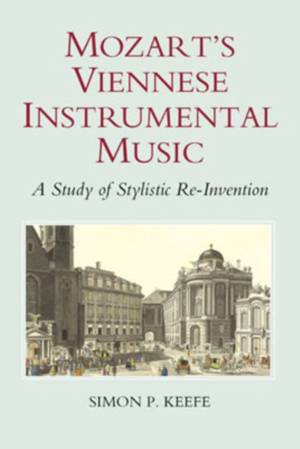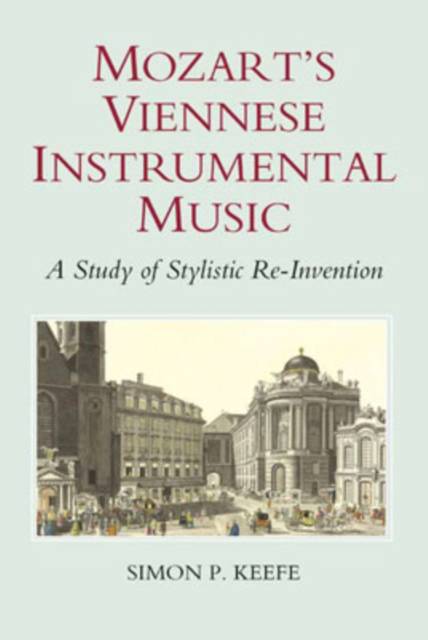
- Afhalen na 1 uur in een winkel met voorraad
- Gratis thuislevering in België vanaf € 30
- Ruim aanbod met 7 miljoen producten
- Afhalen na 1 uur in een winkel met voorraad
- Gratis thuislevering in België vanaf € 30
- Ruim aanbod met 7 miljoen producten
Zoeken
Mozart's Viennese Instrumental Music
A Study of Stylistic Re-Invention
Simon P Keefe
Hardcover | Engels
€ 177,45
+ 354 punten
Omschrijving
The music Mozart composed in Vienna closely examined, bringing out the processes of re-invention and re-formulation it displays. The stylistic evolution of Mozart's Viennese instrumental repertory as a whole [1781-1791], closely tied to historical and contextual lines of enquiry, has yet to receive systematic attention. This book fills the gap through a study of stylistic re-invention, a practically- and empirically-based theory that explains how innovative, putatively inspired ideas take shape in Mozart's works and lead to stylistic re-formulation. Re-invention comprises a two-stage process: Mozart manipulates pre-existent stylistic features of his music to climactic effect, in so doing introducing a demonstrably 'new' stylistic dimension with broad aesthetic resonance; he subsequently re-appraises his style in response to the dimension in question. From close examination of a variety of Mozart's works [piano concertos, string quartets and symphonies in particular], supported by study of Mozart's other chamber and dramatic works, the author shows that stylistic re-invention is a consistent and coherent manifestation of stylistic development. Ultimately re-invention puts centre stage the interaction of intellectual and imaginative elements of Mozart's musicalpersonality, accounting both for processes of reflection and re-appraisal and for striking conceptual leaps.
SIMON P. KEEFE is James Rossiter Hoyle Chair of Music, University of Sheffield.
SIMON P. KEEFE is James Rossiter Hoyle Chair of Music, University of Sheffield.
Specificaties
Betrokkenen
- Auteur(s):
- Uitgeverij:
Inhoud
- Aantal bladzijden:
- 230
- Taal:
- Engels
Eigenschappen
- Productcode (EAN):
- 9781843833192
- Verschijningsdatum:
- 16/08/2007
- Uitvoering:
- Hardcover
- Formaat:
- Genaaid
- Afmetingen:
- 167 mm x 239 mm
- Gewicht:
- 521 g

Alleen bij Standaard Boekhandel
+ 354 punten op je klantenkaart van Standaard Boekhandel
Beoordelingen
We publiceren alleen reviews die voldoen aan de voorwaarden voor reviews. Bekijk onze voorwaarden voor reviews.








